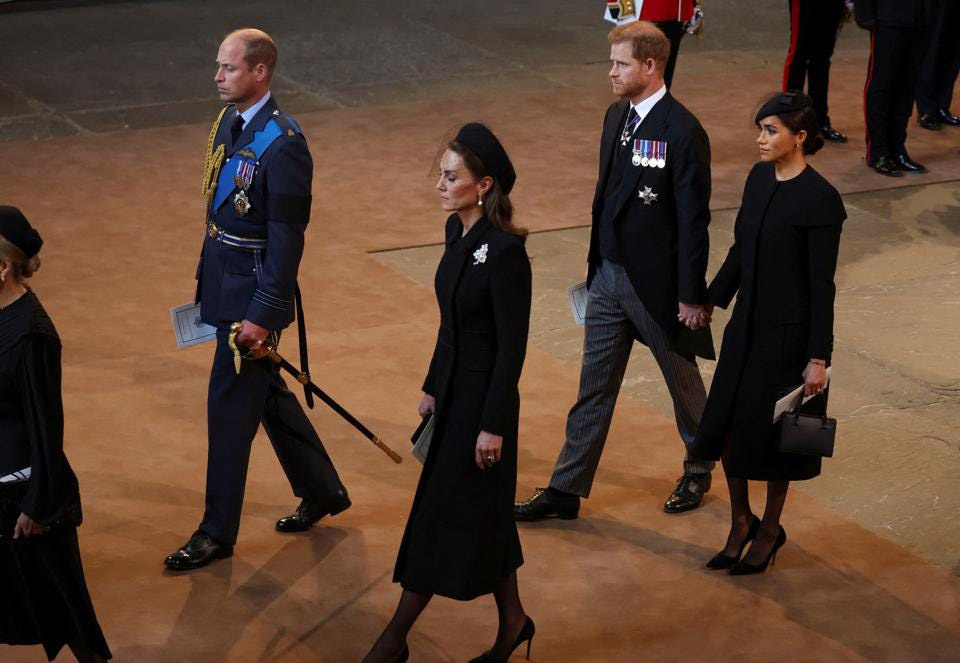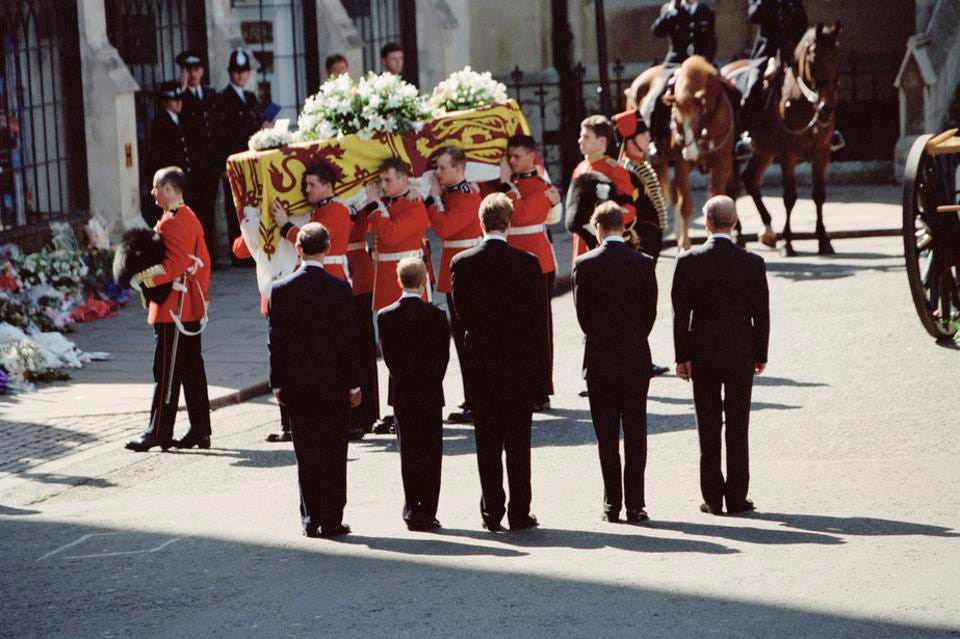
We’ve given a lot of lip service over the past three years to the importance of caring for our mental health. We’ve acknowledged that COVID-19 took an emotional toll, and that we’re lonely and fragile and fraught.
This bleakness is so universally acknowledged that governments have set up suicide hotlines, corporations have doled out mental health days, and this week, a panel of medical experts recommended that doctors screen all people under 65 for anxiety.
Yet when Harry and Meghan, the Duke and Duchess of Sussex, clasped hands in public after the death of their grandmother Queen Elizabeth II, the social media trolls emerged from their dank caves in force, shaming them for this public display of affection, calling them emotionally needy and attention-seeking narcissists.
What I say to those Internet bullies and sarcastic TV pundits is this: Shame on you.
More generally, this widespread reaction to Harry and Meghan shows us that when it comes to trauma, we still don’t get it.
Building better ways to deliver mental health services is a good thing. Growing awareness about the scale of burnout and the stress of isolation is a good thing. Hotlines and mental health days are helpful structures for the people who need and use them.
Trouble is, those things demand nothing of us. They don’t force us to peer inside ourselves to see how we trivialize other people’s pain. They don’t direct our attention inward to face our judgmental mindsets and language when we label people who are suffering as “high maintenance” or “dramatic” or “overly sensitive.” They don’t make us hang our heads in shame over our lack of empathy.
Moving toward a healthy society requires all of us to come along on the journey. We must look honestly at our own reactions to another person’s vulnerability and pain. We must dust off our kindness and compassion and use them to sweep away our disregard and cruelty.
Speaking about the importance of wellbeing isn’t enough.
I understand how hard it can be to grasp another person’s inner turmoil. Anxiety, depression, grief and post-traumatic stress are injuries we often can’t see. It can feel particularly hard to empathize with trauma and its aftermath if you have never experienced trauma.
Yet that is not an excuse for the merciless criticism of Prince Harry for reaching out for a loving hand. That meanness says something about the commentators who spewed it, and nothing about Prince Harry.
In this moment, we don’t need to stretch ourselves to empathize with something we haven’t experienced. We don’t need to imagine how Harry might feel. He told us in unsparing, raw and tender detail in his documentary series, “The Me You Can’t See.”

The funeral of Diana, Princess of Wales at Westminster Abbey in London, 6th September 1997. From left to right, Prince Charles, Prince Harry, Earl Spencer, Prince William and the Duke of Edinburgh during the arrival of the coffin. (Photo by Colin Davey/Getty Images)
GETTY IMAGES
“Every time I put a suit and tie on, having to do the role…before I even left the house I was pouring with sweat, my heart rate was…I was in the fight-or-flight mode…panic attacks, severe anxiety…I was freaking out every single time I jumped in a car and every single time I saw a camera…”
That’s a striking element of traumatic experience that Harry explained. It doesn’t “end” the way other events do. Fears and memories come rushing in unbidden, often prompted by a sensory experience: a noise that sounds like horses hooves on the pavement; an image you see that flashes a scene before your eyes decades later; a startled reaction to a scent you wish you’d forgotten.
Twice in the past 18 months, Harry has been forced by the royal pomp and circumstance, to relive — literally, reenact — his trauma.
In April 2021, members of the royal family were once again called to put their private grief on display following the death of Prince Philip. Prince Harry said publicly that he experienced a panic attack as he journeyed back to London for the funeral.
This week, Harry returned to London to mourn his grandmother. And once again, duty required him to repeat the very experience that traumatized him so completely as a child and then for decades of his life. If he failed to do his duty, if he chose to avoid reenacting the trauma of a public march behind a coffin for a person he loved, the criticism would have buried him.
So he kept calm and carried on.
Given what he’s told us, given what we know about his inner life up to that moment — the racing heart rate, the panic, the emotional scream battling to be let loose — imagine the energy it took to grieve this new loss. Imagine the fortitude it required to keep all that in check, alongside the inevitable memories of the past on international television watched live, again, by millions of people.
And so he reached for his wife’s hand.
The princes, movie stars, sports and music idols who have shared their traumas with us deserve our profound gratitude for pulling back the veil, enabling us to understand — if we care enough to do so — this form of human suffering.
If we change how we see them, we will change how we treat them. That’s when we can truly enter a new age of health and healing for all of us. Getting there requires an emotional and empathic journey we must each undertake from within. No lasting change will happen until we do.